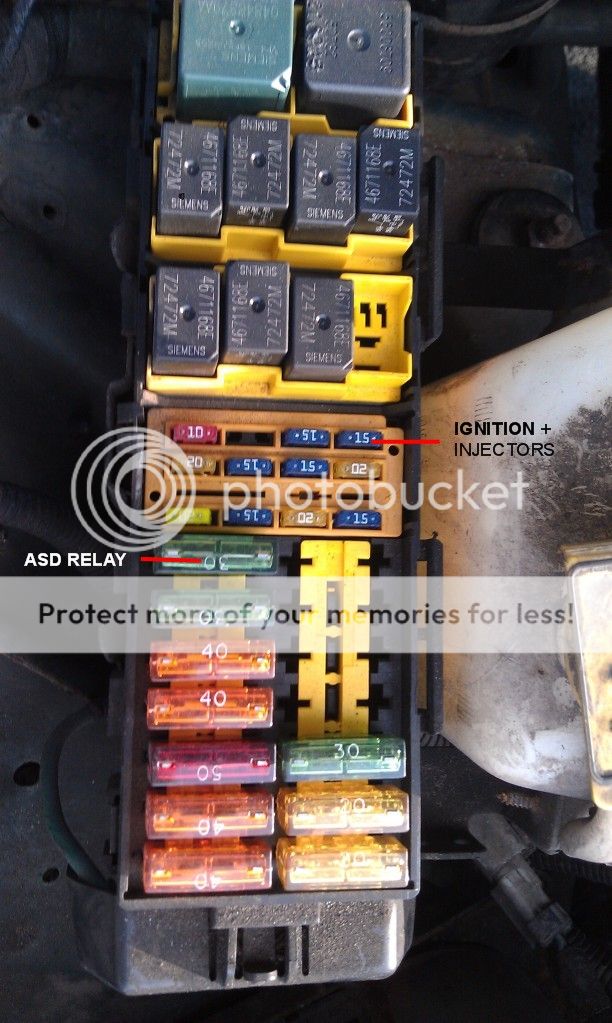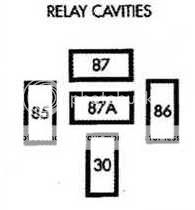x91evo
NAXJA Forum User
- Location
- naxja sucks dick
Well The ground strap and new ignition coils did nada guess its another thing off the check list
napa? looks exactly like mine lol
Wait. CoilS? Plural? What year XJ are we talking about here?
:doh: completely missed that post. My bad.2000 he said...so, yeah, plural
^^ Some good info!
I figured that ground couldnt be that important! ha
Why Jeep why are you doing this to me. No spark is no fun
New CrankPS, CamPS, plugs, coils are fine,
Where should I look next besides checking for 5v at the ign coil rail?
Could it be an ignition switch? Cranks but no spark

Why didn't you say you aren't getting spark.
How do you know you're not getting spark?
Is it that the engine will crank over but not start running on its own?
While you're thinking about ASD relays, ignition system, etc....
Check these fuses in your PDC.

I used an inline spark tester between one of my coils and the plug.
Exactly the engine will crank but not run under its own power.
ASD relay is fine along with the fuse. I can hear the pump prime at key on, and I have 49psi pressure while cranking.
Thats really funny you posted that picture, as I was coming here to post that exact diagram with questions.

/
Obviously this diagram is wrong,
But at Key on I am getting little voltage across the terminals in F18 and F21 positions.
What voltages should these fuses be seeing?

Tried swapping a relay again, no go. Car doesnt even sputter.
#86 everything was normal. 0V key off, and battery voltage key on.
#85 key off was seeing 0.00-0.03V
at key on 0.125-0.129V
So what would this indicate?
Let me add to that I am getting a
P1493 - battery temp sensor? why I have no idea
P0122 - from swapping TPS sensors
How did this happen all of a sudden without the engine runnng/
Just wondering about the split with key ON vs. key OFF voltages at 85.
Try doing this test (pin 85/86) in the fuel pump relay socket to compare results. You should see the same results.
Would it really matter though?
I have 49psi while cranking?
We know the fuel pump circuit is okay that's why I'd like to see what pin 85 is doing on a known good circuit, in terms of voltage difference between key on and key off.
If you don't want to do it, that's up to you.
